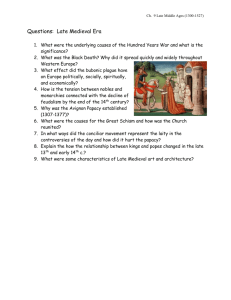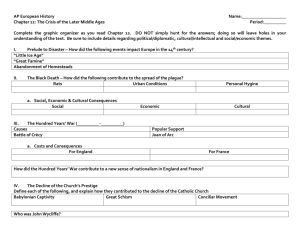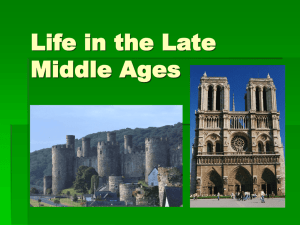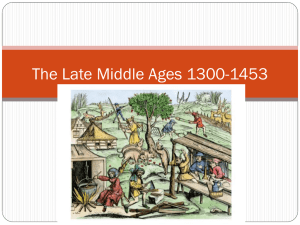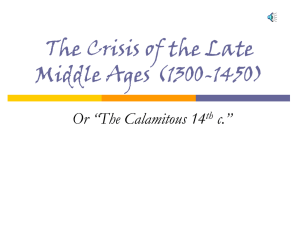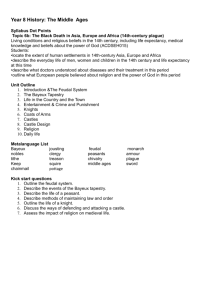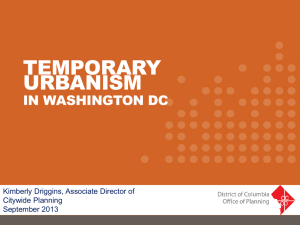AP European History Chap 11 Exam Review
advertisement
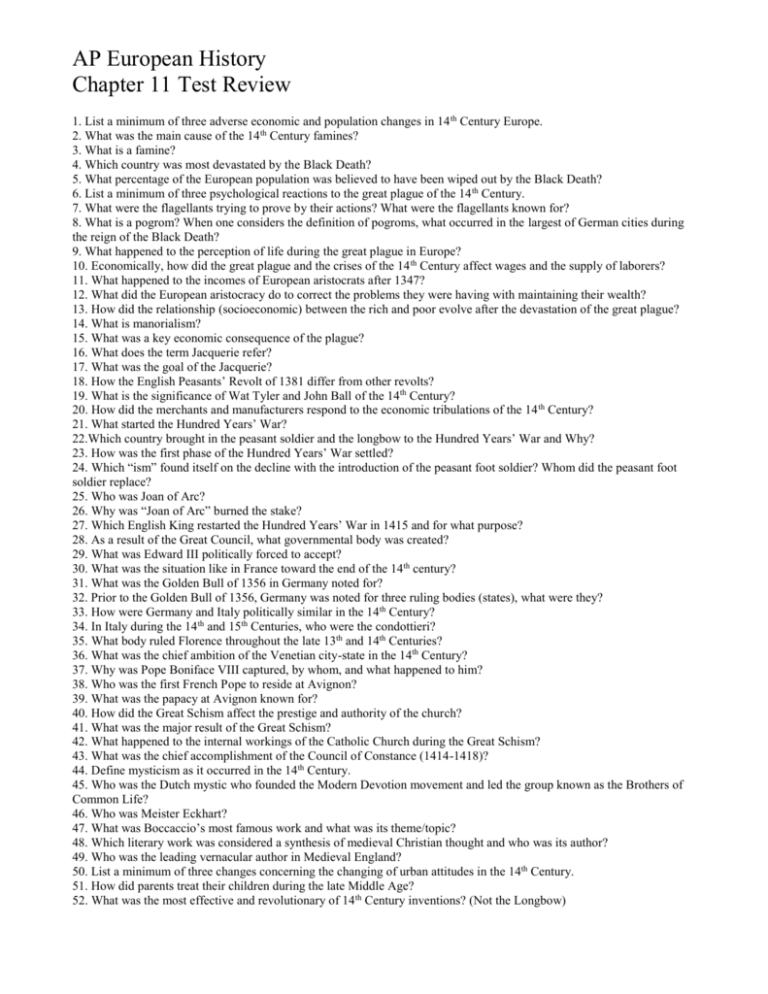
AP European History Chapter 11 Test Review 1. List a minimum of three adverse economic and population changes in 14 th Century Europe. 2. What was the main cause of the 14th Century famines? 3. What is a famine? 4. Which country was most devastated by the Black Death? 5. What percentage of the European population was believed to have been wiped out by the Black Death? 6. List a minimum of three psychological reactions to the great plague of the 14 th Century. 7. What were the flagellants trying to prove by their actions? What were the flagellants known for? 8. What is a pogrom? When one considers the definition of pogroms, what occurred in the largest of German cities during the reign of the Black Death? 9. What happened to the perception of life during the great plague in Europe? 10. Economically, how did the great plague and the crises of the 14 th Century affect wages and the supply of laborers? 11. What happened to the incomes of European aristocrats after 1347? 12. What did the European aristocracy do to correct the problems they were having with maintaining their wealth? 13. How did the relationship (socioeconomic) between the rich and poor evolve after the devastation of the great plague? 14. What is manorialism? 15. What was a key economic consequence of the plague? 16. What does the term Jacquerie refer? 17. What was the goal of the Jacquerie? 18. How the English Peasants’ Revolt of 1381 differ from other revolts? 19. What is the significance of Wat Tyler and John Ball of the 14th Century? 20. How did the merchants and manufacturers respond to the economic tribulations of the 14 th Century? 21. What started the Hundred Years’ War? 22.Which country brought in the peasant soldier and the longbow to the Hundred Years’ War and Why? 23. How was the first phase of the Hundred Years’ War settled? 24. Which “ism” found itself on the decline with the introduction of the peasant foot soldier? Whom did the peasant foot soldier replace? 25. Who was Joan of Arc? 26. Why was “Joan of Arc” burned the stake? 27. Which English King restarted the Hundred Years’ War in 1415 and for what purpose? 28. As a result of the Great Council, what governmental body was created? 29. What was Edward III politically forced to accept? 30. What was the situation like in France toward the end of the 14th century? 31. What was the Golden Bull of 1356 in Germany noted for? 32. Prior to the Golden Bull of 1356, Germany was noted for three ruling bodies (states), what were they? 33. How were Germany and Italy politically similar in the 14th Century? 34. In Italy during the 14th and 15th Centuries, who were the condottieri? 35. What body ruled Florence throughout the late 13th and 14th Centuries? 36. What was the chief ambition of the Venetian city-state in the 14th Century? 37. Why was Pope Boniface VIII captured, by whom, and what happened to him? 38. Who was the first French Pope to reside at Avignon? 39. What was the papacy at Avignon known for? 40. How did the Great Schism affect the prestige and authority of the church? 41. What was the major result of the Great Schism? 42. What happened to the internal workings of the Catholic Church during the Great Schism? 43. What was the chief accomplishment of the Council of Constance (1414-1418)? 44. Define mysticism as it occurred in the 14th Century. 45. Who was the Dutch mystic who founded the Modern Devotion movement and led the group known as the Brothers of Common Life? 46. Who was Meister Eckhart? 47. What was Boccaccio’s most famous work and what was its theme/topic? 48. Which literary work was considered a synthesis of medieval Christian thought and who was its author? 49. Who was the leading vernacular author in Medieval England? 50. List a minimum of three changes concerning the changing of urban attitudes in the 14th Century. 51. How did parents treat their children during the late Middle Age? 52. What was the most effective and revolutionary of 14 th Century inventions? (Not the Longbow)
